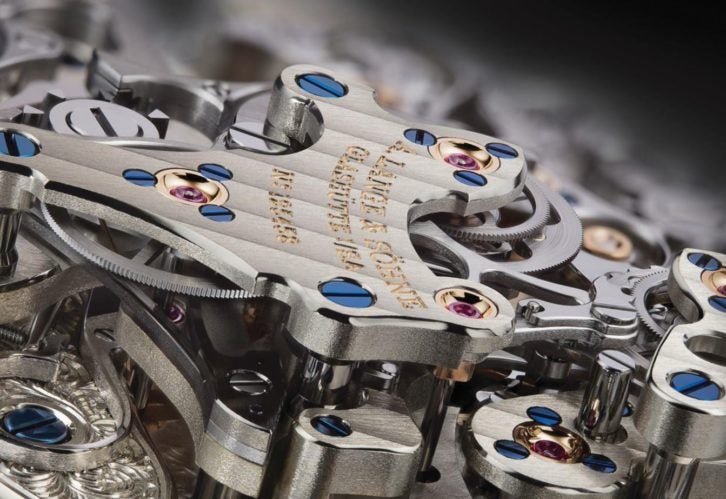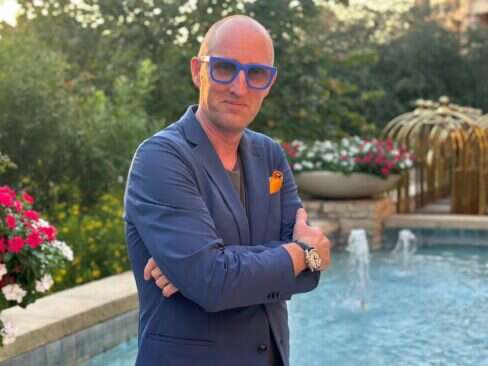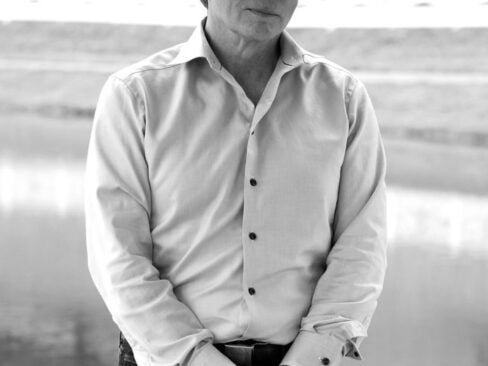This story originally appeared in the July/August 2018 issue of Elite Traveler.
With seven years behind him at the helm of sophisticated and technically advanced A Lange & Söhne, Wilhelm Schmid lets passion drive him as he propels this German watch brand to new heights. Recently he shared his thoughts with Elite Traveler’s Roberta Naas on why this small brand has become increasingly popular with collectors and about the challenges that lie ahead.
A Lange & Söhne is the quintessential luxury watch brand. It is, perhaps, the man’s man of watchmaking. With a very classical appeal, this brand nonetheless also manages to put a thoroughly modern and visionary twist on each watch it creates — attracting watch lovers of all ages. Collectors appreciate its German heritage, and many consider it to set the benchmark of German watchmaking.
 Owned by the Richemont Group, A Lange & Söhne is based in Glashütte in the Saxony region of Germany, and, since 2011, Wilhelm Schmid has headed up the company, guiding it through growth, challenges and change in the face of unflagging popularity. “Since I arrived eight years ago, we have grown in the number of complications we make, in the number of product families and in the number of countries we are sold in,” says Schmid. “We also built an entire state-of-the-art manufacture and grew in head count from about 440 when I arrived to 750 employees now.”
Owned by the Richemont Group, A Lange & Söhne is based in Glashütte in the Saxony region of Germany, and, since 2011, Wilhelm Schmid has headed up the company, guiding it through growth, challenges and change in the face of unflagging popularity. “Since I arrived eight years ago, we have grown in the number of complications we make, in the number of product families and in the number of countries we are sold in,” says Schmid. “We also built an entire state-of-the-art manufacture and grew in head count from about 440 when I arrived to 750 employees now.”
This continual growth represents a phenomenal accomplishment for the German brand. While A Lange & Söhne has roots dating back to 1845, the company essentially had to start from scratch again in the 1990s. After World War II, the Glashütte watch brands were expropriated under the Soviets when Germany was split in half. Many watch-brand leaders fled to West Germany. With the fall of the Iron Curtain, though, some of those brands began rebuilding and reclaiming their past. In 1990, at the age of 66, Walter Lange, great-grandson of founder Ferdinand Adolph Lange, wasted no time breathing new life into the brand and reviving his family’s legacy. He re-established A Lange & Söhne in Glashütte and unveiled its first watches in 1994. The German styling and highly technical appeal led to steady growth, and in 2000, Richemont purchased the brand.
With the strong financial support of the Richemont Group behind it, A Lange & Söhne was free to spread its German wings. “What makes our watches so different from Swiss watches is that we have a real German ethos and design. Throughout our growth these past years, we have always stayed very true to what we are, to that German-ness,” explains Schmid, who admits that one of his biggest challenges is growing the brand while remaining true to its German detailing.
“The no-nonsense approach of our watches is a typical German thing. The robustness of our watches is a typical German thing. While many Swiss watches have a French influence in their design, which is a bit more romantic, a bit softer, the German design at Lange is more robust, more pronounced, more straightforward,” Schmid says. “We are about touch and feel. Since our first watches were introduced 24 years ago, they had a distinct weight about them, and while our dials are always legible and understated, the back of the watch is where the opulence lives because of our movement decoration.”
 Indeed, it is this German design, along with top-quality craftsmanship, that has today’s collectors avidly following the brand. One need only pick up any A Lange & Söhne Zeitwerk, Handwerkskunst or other watch to immediately feel the weight of the materials and the ergonomics of the case. But it is when you turn the watch over that the real magic happens: sapphire casebacks reveal the intricately finished complex mechanics.
Indeed, it is this German design, along with top-quality craftsmanship, that has today’s collectors avidly following the brand. One need only pick up any A Lange & Söhne Zeitwerk, Handwerkskunst or other watch to immediately feel the weight of the materials and the ergonomics of the case. But it is when you turn the watch over that the real magic happens: sapphire casebacks reveal the intricately finished complex mechanics.
“It is like a hidden code for those who wear A Lange & Söhne,” says Schmid, who admits that his greatest passion for the job is always seeing and touching the newest watches. “In today’s world, where people don’t want to display their wealth on their wrist, you can wear a few-hundred-thousand-euro watch and very few people know that is what it costs. We put the same quality craftsmanship into our €14,000 Saxonia Thin and all of our watches.”
Schmid’s matter-of-fact approach to business enables him to see clearly what needs to be done to grow the brand, and he enthusiastically embraces project after project in the forge ahead, traversing the world to stay on top of consumer desires and brand needs. His challenges with growing A Lange & Söhne, like most product-driven businesses, include deciding if, when and where to open retail boutiques.
“Anyone who knows me knows that I am after the local market because I believe that this is the most sustainable business model. It has the strongest resilience against ups and downs, so we won’t invest in a boutique in a country until I am sure there is a strong local market potential,” says Schmid, adding that A Lange & Söhne currently has 17 boutiques around the world. “Having your own boutiques is great because it is almost like a compass. You get to see the customer and get immediate feedback, and this helps you evaluate the direction you need to go.”
Schmid juggles overseeing the manufacture, product development, retail boutique business and all other aspects with a very diligent (one might say German) preciseness. However, he believes one of the key jobs for a CEO of luxury products is staying in touch with the final consumers.
“Traveling around the world to meet customers is like washing gold. You get a lot of stuff in your pan, but you can see flecks of gold. You need water and patience and eventually you wash away the rubbish and get the gold out of it. That gold is the information we need to bring back to our product and development team and to build the future.”
That future involves a serious commitment to change. Schmid admits that Glashütte is not a big enough draw to get high talent in the marketing, communications and design fields. As such, he is relocating that entire division to Berlin — a move certain other remotely located luxury brands are also considering.
Additionally, one of the biggest challenges Schmid needs to confront is how much to embrace digitalization. “I openly admit that getting a feeling of the tightrope, of knowing when to get on e-commerce, is one of the biggest challenges facing us in luxury goods. The digital journey is a learning journey. All of our customers inform and educate themselves on the internet, but the truth is that when you spend a lot of money for a product, the majority of people still want to deal with someone in person. They still want someone they can get ahold of if something goes wrong,” says Schmid.
Does he have the answer? “No, of course not, because I don’t believe there is any golden rule to digital or to any aspect of the luxury business. We just have to approach everything clearly, not be repetitive and don’t lose your identity in any challenge you take on.”










